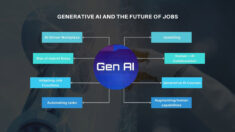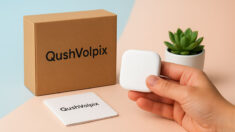
Smart mirrors use artificial intelligence, Internet of Things connectivity, and modern display systems to create multifunctional surfaces that go far beyond reflection. These devices use complex hardware and software components to provide personalised mirror experiences in homes, hotels, and commercial environments.
Core Display Technology in Smart Mirror Systems
The visual interface of smart mirrors is based on carefully built display technologies that blend clarity and reflecting characteristics. Understanding these display technologies explains how these gadgets maintain dual functionality.
Most smart mirrors use LCD or OLED panels beneath specialized two-way mirror glass. This glass allows light from the display to pass through while maintaining reflecting properties when the screen sections are dark. The quality of this two-way mirror has a direct impact on the clarity of information and the effectiveness of reflection.
OLED technology is very advantageous for smart mirror applications. These panels provide their own light, removing the need for backlighting, which can result in an unattractive glow. OLED displays’ self-emissive nature allows for true blacks, which are required to preserve mirror functioning in non-active screen areas. Furthermore, OLED screens have higher contrast ratios and wider viewing angles than standard LCD displays. Essential hardware components collaborate to build effective smart mirrors:
- Processing units. Compact computers like Raspberry Pi or custom ARM processors handle display rendering and AI computations.
- Memory systems. RAM and storage components manage real-time data processing and user preference retention.
- Connectivity modules. WiFi, Bluetooth, and Ethernet adapters enable network communication and device pairing.
- Power management. Voltage regulators and power supplies ensure stable operation across varying electrical conditions.
- Cooling systems. Heat dissipation mechanisms prevent component overheating in enclosed mirror housings.
How AI Powers Smart Mirror Personalization and Intelligence
Artificial intelligence converts simple display-mirror combinations into intelligent systems capable of recognizing and reacting to consumers’ preferences. Machine learning algorithms analyze user interactions and ambient data to provide more sophisticated experiences.
Facial recognition is a core AI application in smart mirrors. Convolutional neural networks use face traits to identify unique users and automatically load their preferences, timetables, and other pertinent information. Under standard illumination circumstances, these devices can attain accuracy rates of more than 95%. The AI recognizes household members by altering content height, language settings, and presented information based on user identification.
Computer vision capabilities in smart mirrors extend beyond facial recognition:
- Posture analysis. Monitors body alignment during exercise routines and provides real-time corrections.
- Skin assessment. Evaluates skin conditions and tracks changes over time for skincare applications.
- Gesture recognition. Interprets hand movements for touchless control of mirror functions.
- Outfit coordination. Analyzes clothing combinations and suggests complementary accessories.
IoT Integration in Smart Mirror Connected Ecosystems
Internet of Things connectivity converts smart mirrors into major hubs for interconnected environments. These devices interface with a wide range of smart home systems and online services via WiFi, Bluetooth, and, on occasion, Zigbee protocols.
The interactive mirror serves as a command center for various connected devices. The mirror interface allows users to control thermostats, lighting, security cameras, and entertainment systems. This centralization eliminates the need for separate control panels and smartphone apps.
Cloud integration allows for real-time information dissemination. Smart mirrors retrieve weather forecasts, traffic updates, calendar appointments, and news feeds from web sources. APIs from multiple platforms enable developers to include specialized information such as fitness tracking data and financial market updates. The mirror transforms into a personalized information dashboard that is suited to each user’s specific demands.
Healthcare IoT integration adds significant value to smart mirror functionality. Bluetooth-enabled health devices sync data with the mirror’s wellness dashboard:
- Smart scales. Transmit weight and body composition measurements for trend tracking.
- Blood pressure monitors. Record cardiovascular health metrics over time.
- Fitness trackers. Display activity levels, sleep patterns, and exercise achievements.
- Medication reminders. Alert users about prescription schedules and refill requirements.
Advanced Display Innovation Driving Smart Mirror Visual Quality
Recent advances in display technology address the distinct issues of merging reflective and display functions. Manufacturers use a variety of inventive techniques to improve visual performance.
High-brightness displays improve visibility in well-lit restrooms and dressing rooms. Modern panels achieve 1000+ nits of brightness while using local dimming zones to retain contrast. These brightness levels ensure that the material is readable even under direct lighting. Anti-glare coatings and polarizing filters improve sight by minimizing surface reflections.
Key sensor technologies enhance smart mirror functionality:
- Ambient light sensors. Automatically adjust display brightness based on room lighting conditions.
- Proximity sensors. Activate the display when users approach and conserve energy during idle periods.
- Temperature sensors. Monitor bathroom humidity and adjust display settings to prevent condensation.
- Motion detectors. Enable gesture control and presence-based content activation.
- Infrared sensors. Support night vision capabilities and low-light facial recognition.
Transparent display technology promises a new frontier for smart mirrors. When turned off, these screens maintain their transparency, resulting in better mirror quality than standard two-way mirror arrangements. Transparent OLED panels can achieve up to 40% transparency while displaying brilliant colors and crisp typography. This technique eliminates the slightly darker appearance found in ordinary smart mirrors.
MicroLED displays represent another promising innovation. In comparison to OLED, these self-emissive displays offer superior brightness, perfect blacks, and a longer lifespan. MicroLED technology provides modular designs in which individual segments may be replaced if broken, hence lowering long-term maintenance costs.
Privacy and Security Considerations for Smart Mirror Technology Implementation.
The use of cameras, microphones, and internet connectivity requires strong security measures. Manufacturers must handle privacy concerns while keeping the device functioning.
Encryption techniques protect data transit between mirrors and cloud services. Most systems use TLS 1.3 or higher for internet connectivity and WPA3 for local network connections. Local processing of sensitive data, notably facial recognition templates, reduces vulnerability to possible intrusions.
Physical privacy features give the user control over data collection. Camera shutters and microphone mute buttons provide hardware-based disconnection. LED lights clearly show when sensors are operating, preventing sneaky recording. Some manufacturers have automatic data deletion procedures in place, which remove recordings and personal information after specific time periods.
User authentication methods protect against unauthorized access:
- Biometric verification. Facial recognition or voice authentication restricts access to personal data.
- Multi-factor authentication. Combines multiple verification methods for enhanced security.
- Guest modes. Temporary profiles limit access to sensitive information for visitors.
- Parental controls. Restrict content and features for child users.
So these were some basic tips on how AI and IoT smart mirrors transform our everyday living.


